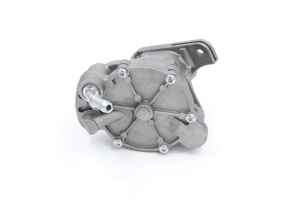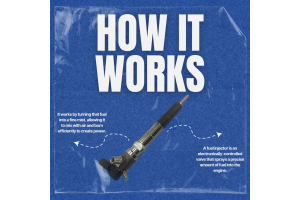Why Your Ford Transit Battery Fails in Cold Weather (and How to Prevent It)

It's a frustrating scenario: you hop into your Ford Transit on a cold morning, turn the key, and... nothing. The engine cranks slowly, or maybe not at all. Cold weather is a notorious killer of car batteries, and your trusty Transit is no exception. Understanding why this happens is the first step to preventing that dreaded flat battery.
The Cold-Weather Battery Drain Explained
There are two main reasons why a battery struggles when the temperature drops:
1. Reduced Chemical Reaction
A car battery works through a chemical reaction between lead plates and sulfuric acid (the electrolyte) to generate electricity. This reaction is temperature-dependent.
-
Slower Chemistry: As the temperature drops, the chemical reaction slows down significantly. This means the battery's ability to produce the high current needed to start the engine—its Cold Cranking Amps (CCA)—is drastically reduced.
2. Increased Engine Resistance
While the battery's output is dropping, the engine's need for power is increasing.
-
Thicker Oil: Cold temperatures make engine oil thicker and more viscous. The starter motor has to work much harder to turn the engine components against this increased resistance, demanding a much higher current draw from the already weakened battery.
Essentially, the cold weather creates a perfect storm: a weaker battery trying to power an engine that requires more energy to start.
How to Prevent Cold-Weather Battery Failure
Fortunately, there are several proactive steps you can take to keep your Transit starting reliably all winter long.
1. Check Your Battery's Health
The simplest step is the most crucial. A battery that's already weak, old, or has damaged cells won't stand a chance against the cold.
-
Test the Voltage: Use a multimeter to check the battery's voltage after the Transit has been sitting for a few hours. A fully charged battery should read around 12.6 volts or higher. Anything below 12.4V indicates a low state of charge.
-
Load Test: Have a mechanic or auto parts store perform a load test. This simulates the high current draw of starting the engine and gives a better indication of the battery's true health and CCA.
2. Keep it Charged and Warm
A fully charged battery is much more resistant to freezing and offers maximum starting power.
-
Use a Battery Tender: If your Transit is parked for long periods, or only makes short trips (which don't fully recharge the battery), consider using a trickle charger or battery maintainer overnight. This keeps the battery topped up without overcharging it.
-
Insulate or Garage: Parking your Transit in a garage, even an unheated one, can raise the ambient temperature around the battery by several degrees, making a huge difference. You can also purchase a thermal battery blanket to help retain heat.
3. Reduce the Strain
Minimize the power demands on the battery before and during starting.
-
Turn Off Accessories: Before turning the key, ensure all high-draw accessories are switched off. This includes the headlights, heater fan, radio, and interior lights. This reserves the battery's full power for the starter motor.
-
Pre-Heat (Briefly): For diesel Transits, ensure the glow plugs have cycled completely. Don't crank the engine until the glow plug light goes off, but also don't wait too long, as the battery is ready to go right after the cycle completes.
By understanding the physics of cold-weather battery drain and taking a few simple preventative steps, you can ensure your Ford Transit stays reliably on the road, no matter how low the thermometer drops! Stay warm and start strong!




